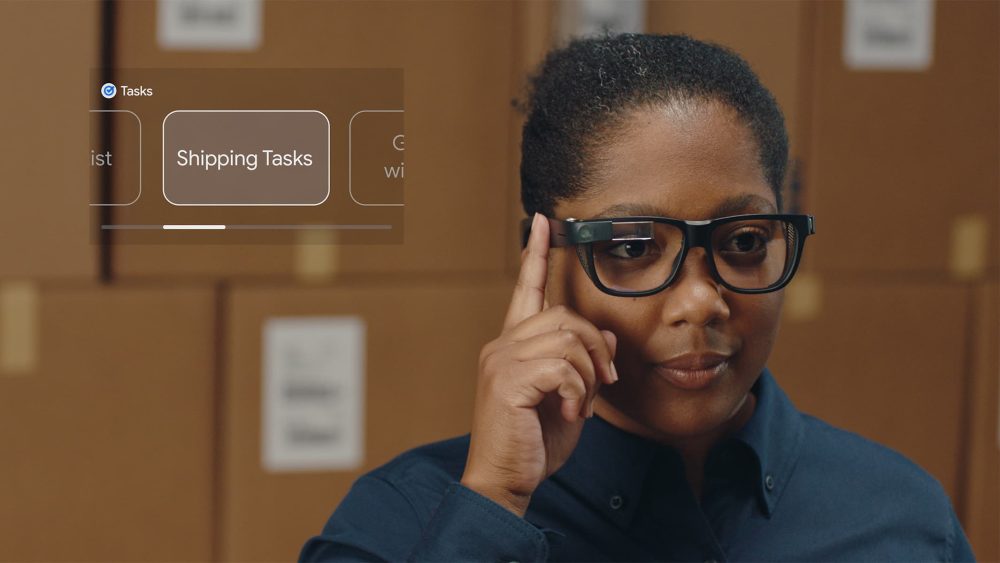
Back in May, Google closed I/O 2022 with a sneak peek at its work on augmented reality hardware. AR glasses that look like normal frames are still a long ways away, but Google is already exploring using ring and bracelet form factors to control them.
The various generations (Explorer, Enterprise Edition 1, and Enterprise Edition 2) of Google Glass are primarily controlled by a touchpad that accepts taps and other gestures. Another method, which was scrapped for Glass Enterprise models, was “ok glass” voice commands, while a light sensor was also used to detect winks so you could quickly take pictures.
Since then, touchpads located at the temples have been the main way that smart glasses from various companies have been controlled. Some, like Snap’s AR Spectacles, also feature dedicated buttons for taking pictures, while hotword support is quite common.


One exception to that was the Focals by North, which used a plastic ring worn on the finger. The “Loop” featured an up/down/left/right joystick that you could click down on to select. It was rather bulky and charged alongside the Focals in a large case.
Google acquired North in 2020 and incorporated the Canadian company into its AR division. The first-generation glasses lost support soon after, while Focals 2.0 was canceled. It’s widely assumed by analysts that North will ultimately influence Google’s smart glasses.
According to sources familiar with the development, Google is looking at both ring and wrist-based control, i.e. bracelets and wristbands, methods for smart glasses. This includes using the existing Loop in prototypes, while next-generation Loop hardware is set to swap the physical joystick out for an optical sensor. The underlying technology could be somewhat similar to that of a computer mouse, and it should be less likely to break as there would be no moving parts.
It’s not clear whether this second version of Loop was originally intended for North’s Focals 2.0 or if it was developed solely within Google for future projects. In either case, support for both instances of the Loop hardware has been integrated into Google’s workflows.

Separately, we’ve learned that Google has explored a bracelet on which users would swipe and tap, with vibration serving as feedback.
A bracelet would certainly provide a larger surface area for swipes than a ring and is a form factor — given smartwatches and fitness trackers — that users are more familiar with. Additionally, vibrations would offer clear and immediate feedback to help make navigation easily understandable. A good analogy would be the haptic clicks felt when rotating the crown of the Pixel Watch.
A control method on your wrist is much more discreet than having to bring up your finger to the side of your face. Additionally, a ring or bracelet could go on your preferred hand whereas most touchpads on smart glasses are solely mounted on one side.
9to5Google’s Take
The lingering question of all this is precisely where Google intends for these new AR control schemes to be used. The company has an existing line of smart glasses through Glass Enterprise, but this would be a sorely limited customer base. Meanwhile, the smart glasses that Google previewed in May were only intended as a limited technology demo, showcasing transcripts from Google Translate in real time.
At the beginning of this year, it was uncovered that Google was in the midst of developing a high-quality AR headset, dubbed Project Iris, for which wrist-based controls could make sense. That said, this type of headset would likely be better suited to a more nuanced control scheme with motion, like Meta’s Oculus Quest Pro.
Wherever it is that Google decides to integrate Loop, it’s good to see the company exploring control schemes for smart glasses that are more natural than tapping the side of your head repeatedly. It also seems more practical than Meta’s hopes for a brain-computer interface-powered wristband.
Header image: Focals by North and “Loop” ring in charging case
FTC: We use income earning auto affiliate links. More.



Comments